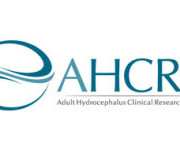The Difficulties of Diagnosing Normal Pressure Hydrocephalus
 According to a United Nations Development Programme study, the population of people over 60 is growing faster than any other age group. With more individuals entering this population, the Hydrocephalus Association is committed to educating the medical community and the public about the form of hydrocephalus called Normal Pressure Hydrocephalus (NPH), which typically presents itself in individuals 60 years of age and older. It is estimated that approximately 10% of the 5.2 million individuals diagnosed with Alzheimer’s disease or other related dementia are, in fact, living with NPH. Unlike other dementias, NPH has a treatment option, and successful treatment can allow an individual to return to an active lifestyle. Education around proper and early diagnosis of NPH is critical, however, it remains misdiagnosed or undiagnosed in too many individuals. Why?
According to a United Nations Development Programme study, the population of people over 60 is growing faster than any other age group. With more individuals entering this population, the Hydrocephalus Association is committed to educating the medical community and the public about the form of hydrocephalus called Normal Pressure Hydrocephalus (NPH), which typically presents itself in individuals 60 years of age and older. It is estimated that approximately 10% of the 5.2 million individuals diagnosed with Alzheimer’s disease or other related dementia are, in fact, living with NPH. Unlike other dementias, NPH has a treatment option, and successful treatment can allow an individual to return to an active lifestyle. Education around proper and early diagnosis of NPH is critical, however, it remains misdiagnosed or undiagnosed in too many individuals. Why?
Normal Pressure Hydrocephalus, often difficult to diagnose, is characterized by the gradual onset of a triad (group of three) of symptoms, usually in the following order:
- Gait disturbance (difficulty walking): A hypokinetic gait consisting of small shuffling steps, a feeling of heavy feet (“magnetic” gait ~ feet act as though they are magnetically attracted to the floor), a tendency to fall, and difficulty using stairs. Making turns usually involves a series of choppy, short steps.
- Urinary incontinence (impaired bladder control): A frequent or urgent need to urinate, or the loss of control to hold back urine.
- Mild dementia (cognitive impairments): Forgetfulness, short-term memory loss, loss of interest in activities, or mood changes.
What makes the diagnosis of NPH difficult is the fact that symptoms of NPH occur in other conditions that are common in an aging population, such as Parkinson’s disease (PD), osteoarthritis, and Alzheimer’s disease (AD). NPH-like symptoms can occur in Alzheimer’s, vascular dementia and Parkinson disease or NPH may be a co-morbidity with AD or PD. In NPH, not all of the symptoms arise at the same time. The combination of dementia-like symptoms, walking problems, and urinary problems (the “classic” Hakim triad – named after Salomon Hakim, MD, PhD, the clinician who first defined NPH over 50 years ago) alert health care providers to the possibility of NPH. However, it may take years for all three symptoms to present (if at all). The triad is neither necessary nor sufficient to make the diagnosis. One may present with just gait impairment and have NPH. On the other hand, even if the full triad is present, one cannot be assured of the diagnosis without further ancillary testing, detailed below.
Diagnosing NPH
A variety of diagnostic tests are typically used to diagnose NPH.
Brain imaging exams identify enlarged ventricles.
- CT scans involve the use of x-rays to produce cross-sectional images that allow clinicians to review different parts of the brain.
- Magnetic resonance imaging (MRI) produces images that detail the ventricular system (cerebrospinal fluid (CSF) filled cavities in the brain) and help to rule out other disorders (such as subdural hematoma, tumor, infection, or a structural abnormality). MRI can often help distinguish obstructive from communicating hydrocephalus which can influence the treatment of hydrocephalus.
- Cisternography, more involved than CT scan or MRI, is not widely used. Using the injection of tracers, it highlights absorption of the CSF.
Neuropsychological testing is the most accurate means of determining and documenting cognitive strengths and problems and can help provide a more accurate diagnosis of the range of neuropsychological problems. The testing involves answering questions and performing tasks.
- An individual’s appearance, mood, anxiety level, and experience of delusions or hallucinations are evaluated.
- Cognitive abilities such as memory, orientation to time and place, attention, use of language, and abilities to carry out a range of tasks and follow instructions are assessed.
- Reasoning, abstract thinking, and problem solving are analyzed.
Gait assessment is often very useful in determining the degree of impairment of an individual. It is also useful for following patients after shunt surgery or endoscopic third ventriculostomy to evaluate the success of the surgical treatment.
Lumbar CSF removal predicts the response to shunting. When a large volume of CSF, typically 30-40 cc, is removed from the lower back region, one or more of the NPH symptoms may lessen or reverse. Such symptomatic improvement with lumbar puncture is interpreted as meaning that a surgical shunt would be clinically beneficial. It is important to note that the reversal of symptoms from the lumbar puncture is temporary.
- Lumbar puncture (spinal tap) is an invasive procedure that removes fluid from the spinal CSF space. CSF pressure may be measured and fluid may be analyzed for abnormalities that might give a clue as to the cause of the problem.
- Extended lumbar drainage may be performed when there is no symptomatic relief from a simple lumbar tap, if the clinical suspicion of NPH is high.
- CSF outflow resistance is a more involved test that determines the capacity of the body to absorb CSF.
These diagnostic tests assist medical professionals in determining the existence and severity of NPH in a patient, as well as the potential treatment options. They also assist in making the distinction between NPH and the previously listed conditions with similar symptomatic presentations, such as Alzheimer’s and Parkinson’s. This is very important because the treatment for Parkinson’s or Alzheimer’s disease and NPH is quite different. An estimated 80% of the 700,000 Americans with NPH still suffer through this devastating but treatable condition because they have been unable to get an accurate diagnosis and proper treatment. There are well-known cases where patients with NPH carry an erroneous diagnosis for a decade or more, remaining untreated for NPH and being locked in a state that is easily reversible when the correct diagnosis is made.
It is critical for individuals and those within the medical community to know more about Normal Pressure Hydrocephalus. The Hydrocephalus Association is working with its Medical Advisory Board and members of the Adult Hydrocephalus Clinical Research Network to bring more awareness to NPH.
Visit In the News in HA’s Newsroom for recent media coverage of Normal Pressure Hydrocephalus.
Other Useful Resources
HA CONFERENCE: 14th National Conference on Hydrocephalus with NPH-specific educational sessions and social events, June 16 – 19, 2016
HA COMMUNITY PORTAL: NPH Patients and Caregivers
RESEARCH: Building Community: A case for adult hydrocephalus research
WEBINAR: What if it isn’t Alzheimer’s or Parkinson’s? Understanding Normal Pressure Hydrocephalus
VIDEOS:
Hydrocephalus Association: What is NPH?
AHCRN/HA BLOGS:
Bringing Normal Pressure Hydrocephalus Out of Obscurity
Voices from Our Community: Dr. Harold Conn’s Decade of NPH Misdiagnosis
Voices from Our Community: Milton Newman Shares His Story of Normal Pressure Hydrocephalus
Voices from Our Community: Joyce Schwartz Spreads Her Message about Normal Pressure Hydrocephalus










